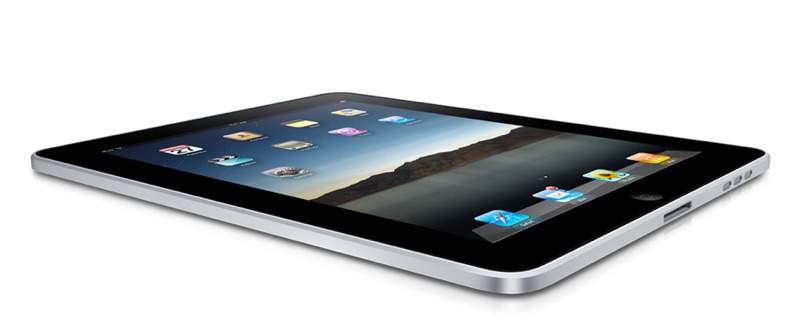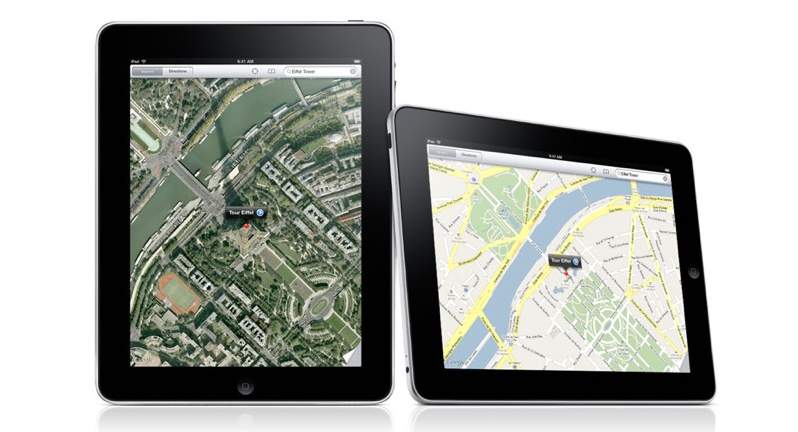
If you’ve been hunting for an iPad alternative to satisfy your tablet needs, look no further than here. Samsung’s Galaxy Tab will be sold through Verizon Wireless for $599.99 come November 11. You want specs? Oh, I got specs. The Tab sports a 7-inch (1024×600, WSVGA) multitouch display, 1GHz Cortex A8 Hummingbird processor, rear-facing 3 megapixel camera with LED flash and autofocus, front-facing 1.3 megapixel camera, 2GB of onboard storage with 16 GB pre-installed on a microSD card (expandable memory up to 32GB), 802.11n WiFi, A-GPS, and a headphone jack. It weighs 13 ounces and is 12 millimeters thin; Sammy says it can “easily fit into a jeans’ backpocket”, but I’m not so sure about that. The display supports full HD 1080p video playback and the rear-facing camera can shoot up to 720p at 30 fps. The browser supports Adobe Flash Player 10.1.
The Tab runs Android 2.2 (aka Froyo) with a tweaked version of Samsung’s TouchWiz skin on top. Google Maps Navigation and Google Goggles come preinstalled, along with Swype keyboard functionality. Apps like Qik and Fring are available to download in the Android Market and can be used for video chatting over a WiFi connection. In addition to its custom skin, Samsung is throwing in some of their own apps they think will be useful for users. The Media Hub offers a “vast lineup of critically acclaimed films and TV programs for rent or purchase.” Samsung has partnered with MTV Networks, NBC, Paramount, and Universal Studios Home Entertainment to bring media content to Tab owners. Purchased content can be shared with up to five devices that carry the Media Hub application. The Social Hub “works with the user’s Messaging and Contacts to initiate the sending and receiving of information, whether it is e-mail, instant messaging, social network updates or SMS messages.” Also, calendar information from portal calendars like Google Calendar and social networks can be unified into one calender view. There’s also a Document Viewer & Editor that can open and make changes to any Word, Excel, Powerpoint or PDF document, AllShare DLNA Technology can stream content to DLNA-compatable devices, and Daily Briefing gives you access to updated weather, news, stocks, and schedules. Accessories will be sold separately: keyboard dock ($99.99), desktop dock ($49.99), car/GPS dock ($99.99).
The Tab will eventually be sold through all major US carriers (including AT&T, Sprint, and T-Mobile), but it’s coming to Verizon Wireless first. The Tab on VZW will sell for $599.99 with no strings attached, meaning there’s no required 2-year contract obligation. You can access the Internet on it using WiFi, and if you so choose you can add an optional 3G plan and pay $20/month for 1GB of data. Users can access V CAST Apps, Verizon’s mobile storefront for apps, and the Tab will come preloaded with V CAST Music, V CAST Song ID, VZ Navigator, Slacker Radio, Kindle for Android, BLOCKBUSTER On Demand, and a game called “Let’s Golf.” Text, picture and video messaging is supported, but voice calling is not. I repeat, the Tab is not a cell phone. It may look like an oversized Android handset, but it cannot make and receive calls in the U.S.
Look in the gallery below to check out the Samsung Galaxy Tab from all angles, and jump after the break to watch a 10 minute “official demo” of the Android tablet.
Update (10/25): Today Sprint shared pricing details for their version of the Galaxy Tab. Sprint customers can purchase the Tab for $399.99 with an obligatory two-year contract and they’ll need to cough up $29.99/month for 2GB of data or $59.99 for 5GB. Preorders start today and it releases November 14.
Update 2 (10/27): T-Mobile will sell the Tab for $399.99 on a two-year contract. A $35 activation fee is required. Goes on sale November 10.
Update 3: The Tab is also coming to U.S. Cellular, but price and a release date have not been detailed yet.

















